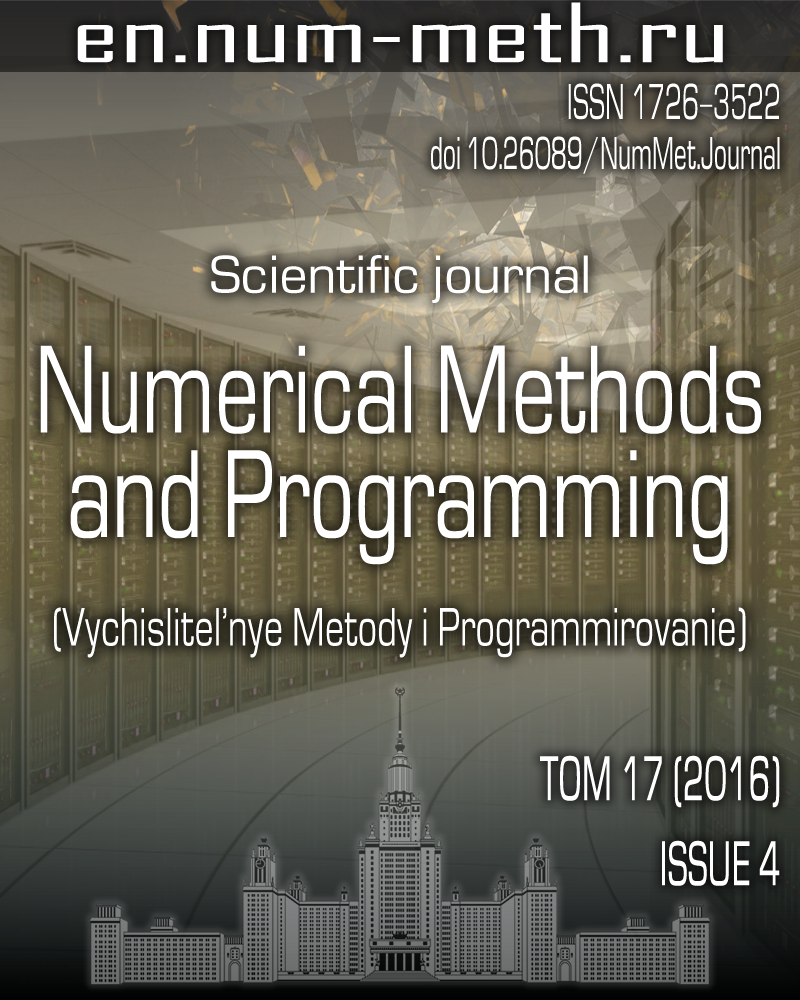DOI: https://doi.org/10.26089/NumMet.v17r445
Near surface reconstruction using the full waveform inversion method: a resolution analysis
Keywords:
full waveform inversion method
SVD analysis
resolution capability
inverse dynamical problem
free surface
Rayleigh waves
elastic parameter coupling
Abstract
The effect of the Rayleigh wave on full waveform inversion (FWI) is studied. It is shown that the Born operator resolution is better when the Rayleigh waves are not taken into account. A numerical algorithm to analyze the influence of different parameters of the inverse dynamical seismic problem (such as source/receiver geometry, frequency range, elastic model parametrization, etc.) on the near-surface geological section reconstruction is proposed. As a demonstrative example, we show that the best elastic parameters for macrovelocity reconstruction via FWI for a subsurface observation system are P- and S-velocities and density.
Published
2016-11-17
Issue
Section
Section 1. Numerical methods and applications
References
- J. Virieux and S. Operto, “An Overview of Full-Waveform Inversion in Exploration Geophysics,” Geophysics 74 (6), WCC1-WCC26 (2009).
- W. Menke, Geophysical Data Analysis: Discrete Inverse Theory (Academic, New York, 1989).
- C. R. Vogel, Computational Methods for Inverse Problems (SIAM, Philadelphia, 2002).
- M. J. Grote and I. Sim, Efficient PML for the Wave Equation. arXiv preprint: 1001.0319v1 [math.NA] (Cornell Univ. Library, Ithaca, 2010), available at
https://arxiv.org/abs/1001.0319v1. - K. G. Gadylshin and V. A. Tcheverda, “Nonlinear Least-Squares Full Waveform Inversion: SVD Analysis,” Vychisl. Metody Programm. 15, 499-513 (2014).
- V. A. Tcheverda and V. I. Kostin, “r-Pseudoinverse for a Compact Operator,” Sib. Elektron. Mat. Izv. 7, 258-282 (2010).
- X. S. Li and J. W. Demmel, “SuperLU_DIST: A Scalable Distributed-Memory Sparse Direct Solver for Unsymmetric Linear Systems,” ACM Trans. Math. Softw. 29 (2), 110-140 (2003).
- V. Hernandez, J. E. Roman, and V. Vidal, “SLEPc: A Scalable and Flexible Toolkit for the Solution of Eigenvalue Problems,” ACM Trans. Math. Softw. 31 (3), 351-362 (2005).
- V. Hernandez, J. E. Roman, and A. Tomas, “A Robust and Efficient Parallel SVD Solver Based on Restarted Lanczos Bidiagonalization,” Electron. Trans. Numer. Anal. 31, 68-85 (2008).
- G. H. F. Gardner, L. W. Gardner, and A. R. Gregory, “Formation Velocity and Density - the Diagnostic Basics for Stratigraphic Traps,” Geophysics 39 (6), 770-780 (1974).
- F. Collino and C. Tsogka, “Application of PML Absorbing Layer Model to the Linear Elastodynamic Problem in Anisotropic Heterogeneous Media,” Geophysics 66 (1), 294-307 (2001).
- A. N. Tikhonov and V. Ya. Arsenin, Solution of Ill-Posed Problems (Nauka, Moscow, 1979; Wiley, New York, 1977).


